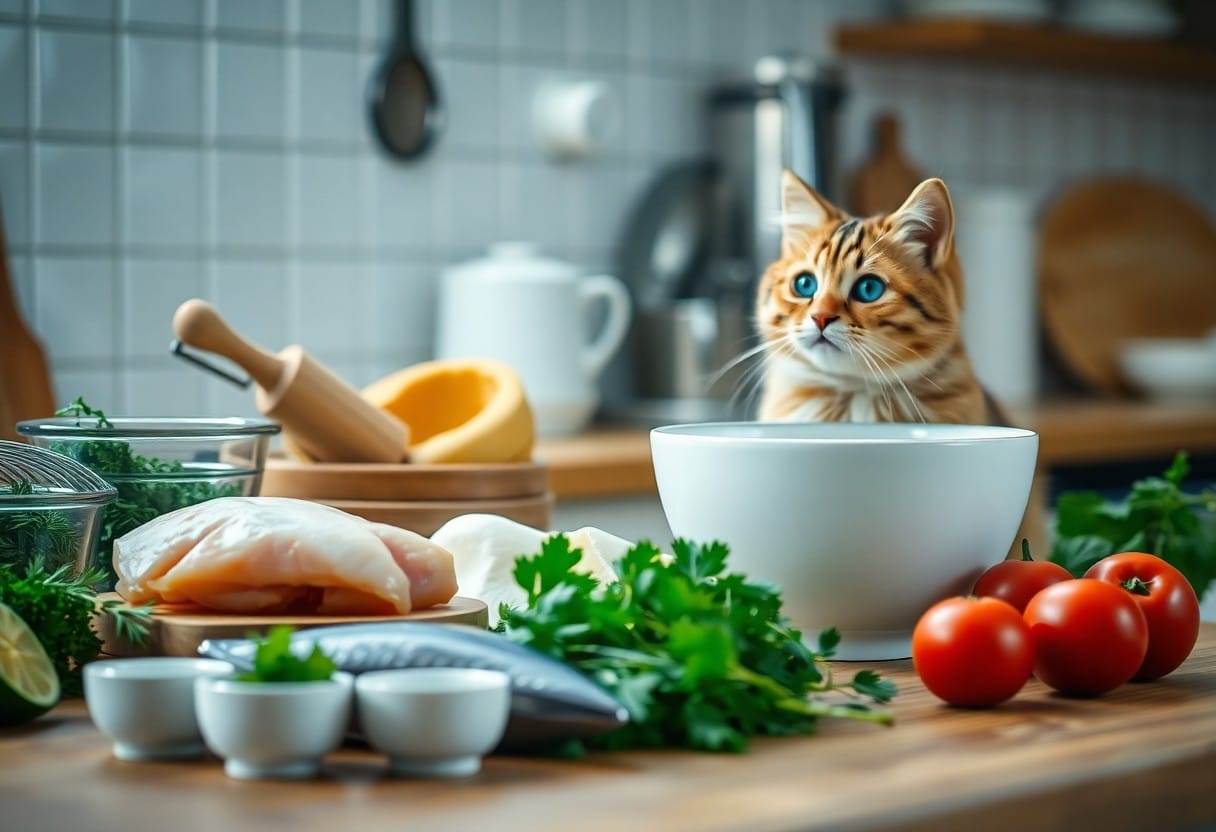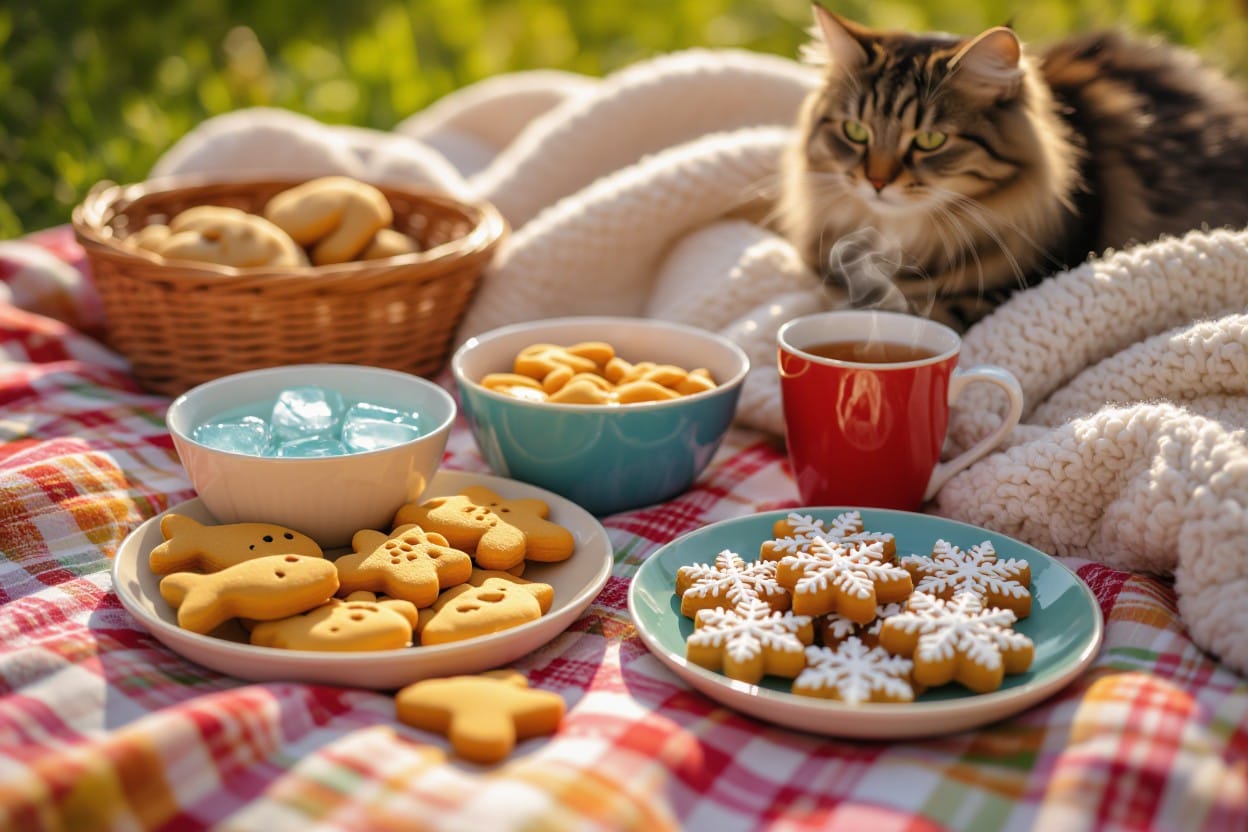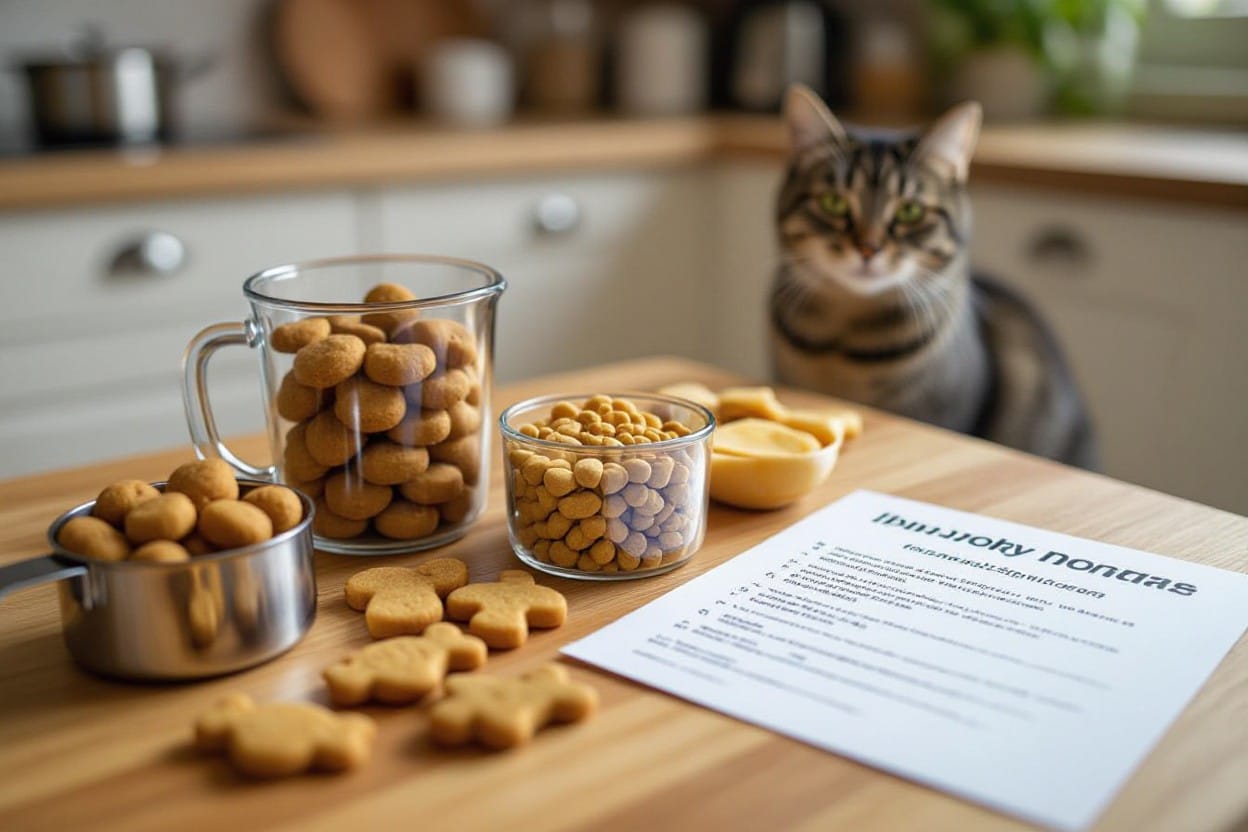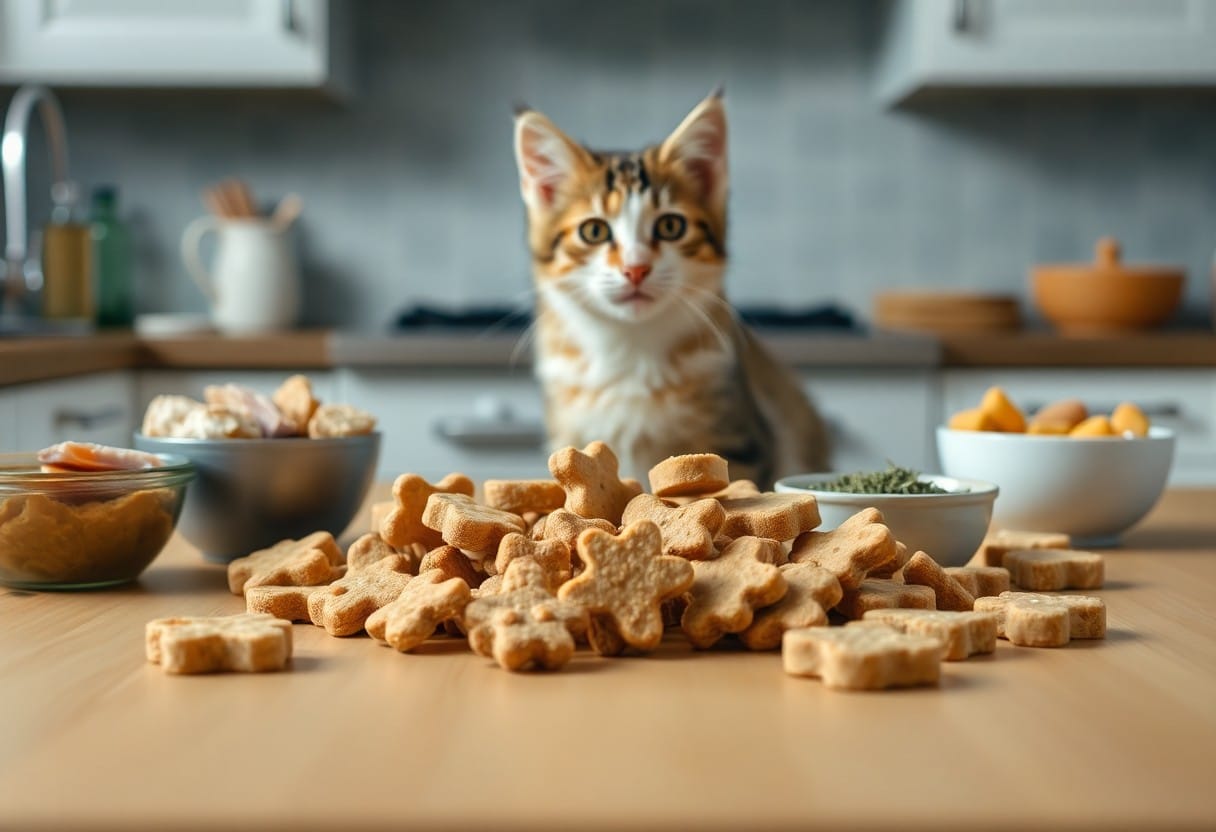Most cat owners want the best for their furry companions, and crafting all-natural cat treats in your own kitchen is a fantastic way to ensure they receive healthy, wholesome snacks. By making treats from scratch, you can avoid harmful additives and preservatives often found in commercial products. This guide will walk you through simple, nutritious recipes that will not only keep your cat happy but also allow you to customize flavors to suit their taste. Join the growing movement of pet owners dedicated to promoting a healthier diet for their beloved pets.

Key Takeaways:
- Homemade cat treats can be made using simple, all-natural ingredients, ensuring your cat enjoys healthy snacks without artificial additives.
- Incorporating various flavors and textures can enhance the appeal of treats, catering to different feline preferences and dietary needs.
- Making cat treats at home allows for customization, empowering pet owners to create treats that align with their cat’s health requirements and taste preferences.
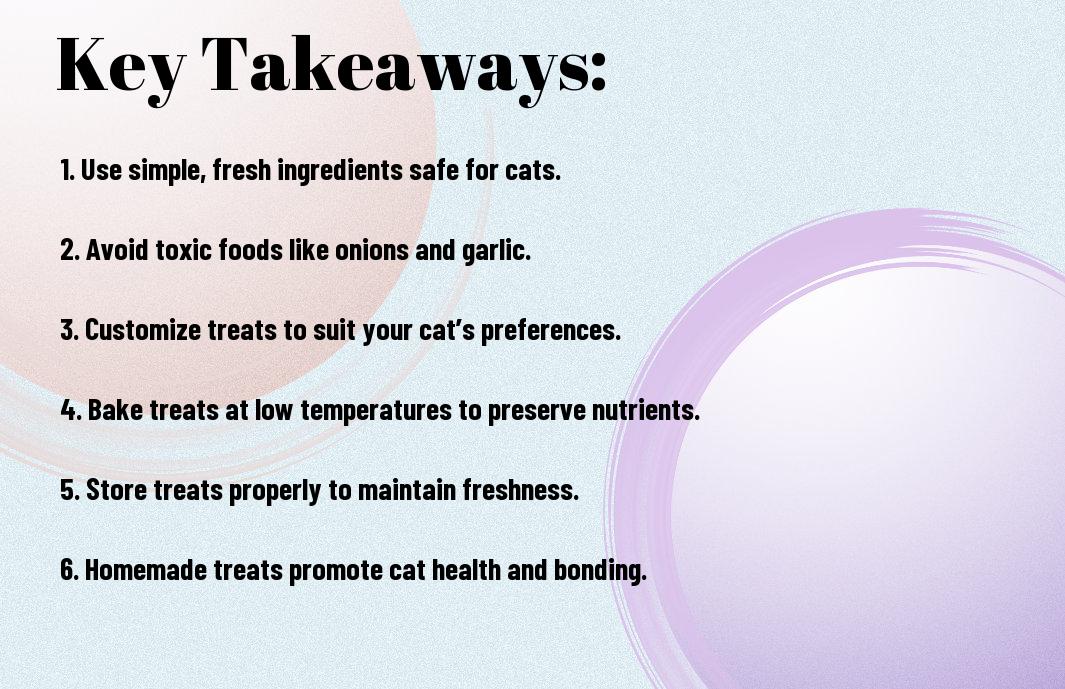
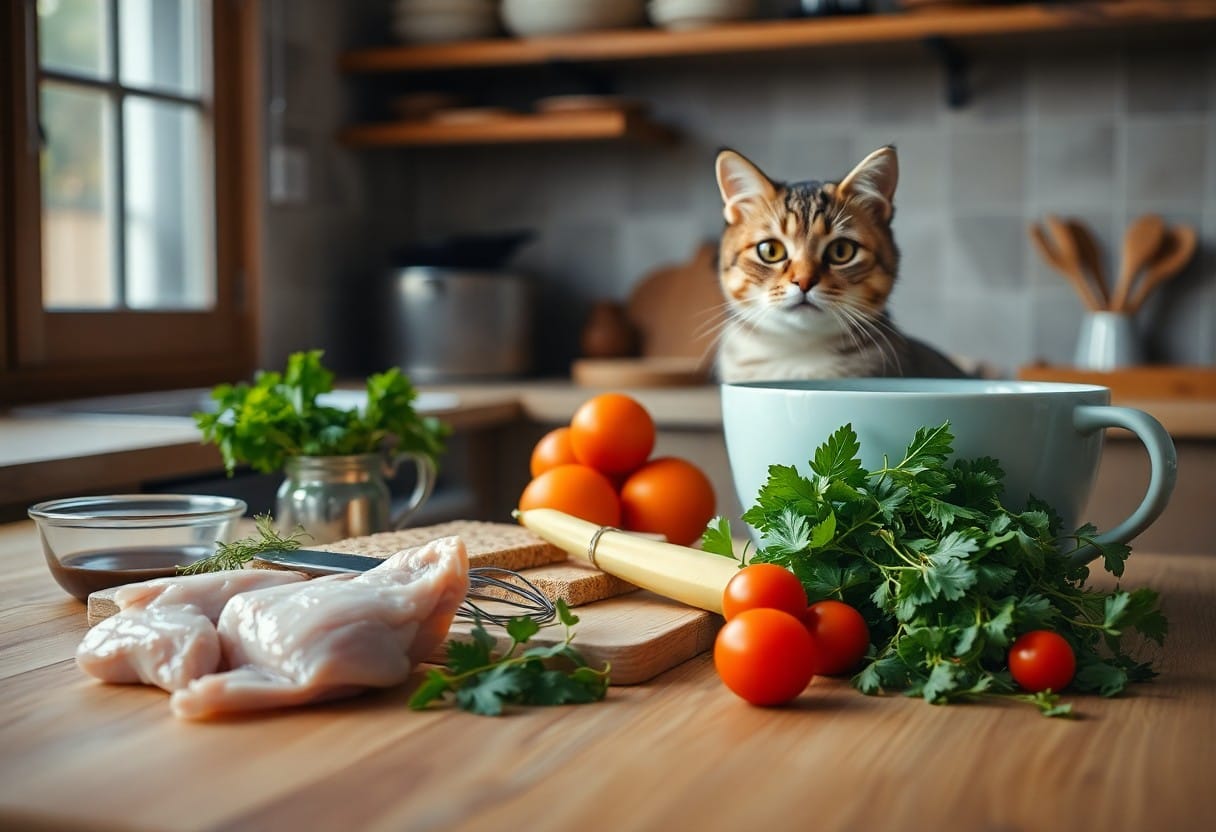
Understanding Your Cat’s Nutritional Needs
The foundation of crafting all-natural cat treats lies in understanding your cat’s nutritional needs. Cats are obligate carnivores, which means they require certain nutrients found primarily in animal-based foods. By tailoring your homemade treats to meet these requirements, you can ensure that your feline friend remains healthy and vibrant, enjoying the benefits of a balanced diet.
Essential Nutrients for Cats
Needs such as protein, taurine, and fatty acids should be at the forefront of your mind when preparing treats for your cat. Protein is imperative for muscle growth and energy, while taurine supports heart and eye health. Additionally, fatty acids promote a healthy coat and skin, making these nutrients vital components of your cat’s diet.
Common Dietary Restrictions
Cats can develop several dietary restrictions based on health conditions or sensitivities. Many cats are sensitive to ingredients like grains, dairy, and certain meats. It’s important to identify these restrictions to avoid gastrointestinal upset or allergic reactions. Always be observant of any signs of intolerance and consult your veterinarian if you have any questions about your cat’s dietary needs.
Nutritional sensitivity in cats often manifests in various ways, including upset stomachs, itching, or low energy levels. Some cats may have food allergies that require you to avoid common protein sources like chicken or beef. If your cat has been diagnosed with a condition like diabetes, you’ll need to focus on low-carbohydrate formulas. A careful understanding of these dietary restrictions is imperative for preparing safe and healthy treats that your cat will love.
Choosing Natural Ingredients
Even when creating cat treats in your kitchen, selecting the right natural ingredients is necessary to ensure your feline friend enjoys healthy and tasty snacks. By prioritizing fresh, whole foods, you can avoid artificial additives and preservatives, creating a wholesome treat that embodies love and care. Choose ingredients that not only appeal to your cat’s palate but also support their overall health and well-being.
Safe and Healthy Ingredients
To create nutritious cat treats, focus on safe and healthy ingredients like lean meats, such as chicken or turkey, and wholesome vegetables like carrots and pumpkin. Whole grains, including oats and brown rice, can also be great additions. These nutritious choices will provide necessary vitamins and minerals to promote your cat’s vitality while satisfying their taste buds.
Harmful Ingredients to Avoid
One of the most important steps in making cat treats is identifying harmful ingredients to avoid. Certain foods, while safe for humans, can pose serious health risks to cats.
Safe and nourishing treats are all about choosing the right ingredients. Avoid harmful items such as onions, garlic, chocolate, and caffeine, which can be toxic to cats and lead to severe health issues. Additionally, avoid artificial sweeteners like xylitol, which can be deadly. Make it a priority to educate yourself on safe food choices, as ensuring your cat’s safety and health should always come first in your culinary adventures.
Basic Recipes for All-Natural Cat Treats
After exploring the benefits of homemade treats, you’re ready to look into some basic recipes that your feline friend will adore. These all-natural cat treat recipes are simple and quick to prepare, ensuring that you can whip them up with ingredients found right in your kitchen. By choosing whole foods, you’ll be providing your cat a wholesome snack that enhances their health and happiness.
Simple Fish Treats
AllNatural fish treats are a fantastic option for cats, as they are packed with protein and omega-3 fatty acids. Combine canned fish, such as sardines or salmon, with a bit of whole wheat flour and an egg, then shape the mixture into small balls. Bake until firm, and soon your kitty will be enjoying a delicious, fishy snack that satisfies their cravings!
Chicken and Pumpkin Bites
Behind the delicious “Chicken and Pumpkin Bites” lies a perfect blend of flavor and nutrition. Using lean chicken and wholesome pumpkin puree makes for a tasty treat that’s rich in vitamins and easy to digest. The moisture from the pumpkin also provides hydration, which is vital for your cat’s overall health.
Understanding the combination of chicken and pumpkin is key for creating a high-value treat for your feline. The lean protein from chicken supports muscle health, while pumpkin is an excellent fiber source, promoting digestive health. When preparing these bites, always ensure you’re using canned pumpkin (not pumpkin pie filling), as added sugars and spices can be harmful to cats. Be mindful of portions, as these treats should be given in moderation, enhancing your cat’s diet without overwhelming it.
Advanced Treat Recipes
Many cat owners are eager to elevate their feline’s snack time with advanced treat recipes that offer both nutrition and flavor. You can explore fun and creative ways to treat your cat by trying out these delightful recipes:
| Recipe | Key Ingredients |
|---|---|
| Catnip-Infused Delights | Catnip, whole wheat flour, egg |
| Grain-Free Options | Chicken, sweet potato, coconut flour |
Catnip-Infused Delights
Delights made from catnip are a surefire way to amuse your cat while providing extra health benefits. Using whole wheat flour and fresh catnip, you can create treats that not only taste great to your cat but also promote relaxation, making them perfect for the end of the day.
Grain-Free Options
Treat your cat to nutritious snacks with grain-free options that are easy to make. These recipes focus on protein-rich ingredients instead of grains, making them suitable for cats with dietary sensitivities.
In addition to being grain-free, these treats can help cater to your cat’s specific needs by utilizing high-quality proteins such as chicken or turkey, promoting muscle health and energy. Incorporating ingredients like sweet potato adds necessary vitamins and minerals that support overall well-being. Always be cautious with the amount of treats given, ensuring that they make a healthy addition to your cat’s diet without overindulgence. Your kitty will thank you!
Storing and Preserving Homemade Treats
Your homemade cat treats deserve proper storage to maintain their freshness and flavor. Keep these delightful snacks in airtight containers, preferably in a cool, dark place, like a pantry or cupboard, to maximize their shelf life. If you have made a large batch, consider freezing some treats to retain their quality and provide your feline friend with a tasty surprise later on!
Best Practices for Freshness
Treats can lose their appeal over time, so always aim to store them in airtight containers right after baking. For even better preservation, consider using vacuum-sealed bags or containers with desiccants to absorb moisture. Keeping the treats away from sunlight and heat will also help maintain their crunchy texture and flavor for your cat’s enjoyment!
Shelf Life of Natural Treats
Any homemade cat treats typically last about 1-2 weeks at room temperature, depending on their ingredients. If you’ve added moisture-rich components or skipped preservatives, they might spoil faster. Storing treats in the fridge can extend their life to about 3-4 weeks, while freezing will keep them safe for several months.
Life expectancy of your natural cat treats varies significantly based on their ingredients and storage conditions. Treats made with no preservatives typically have a shorter shelf life. While dry treats can last a couple of weeks at room temperature, baking moist treats necessitates refrigeration to avoid spoilage. Freezing is ideal for longer-term storage, allowing you to prepare larger batches without worrying about food safety concerns and providing your pet with healthy, homemade delights whenever you want!
Engaging Your Cat with Treats
Despite being independent creatures, cats can be easily engaged with the right treats. These all-natural cat treats you create at home can serve as motivators for play and learning, helping to foster a deeper bond between you and your feline companion. Use them as rewards during playtime or training sessions to keep your cat active and entertained. Moreover, offering treats during interactive sessions can stimulate your cat’s curiosity and encourage exploration.
Training and Treats
One effective way to train your cat is by incorporating treats into the process. When your cat successfully follows a command or performs a desired behavior, reward them immediately with a tasty, homemade treat. This positive reinforcement helps them associate good behavior with receiving a treat, making them more likely to repeat the action. Be consistent, and keep training sessions short and fun to maintain their interest.
Fun Ways to Serve Treats
At mealtime or any time you want to spoil your cat, there are plenty of fun ways to serve treats that will excite them! Offering treats in interactive toys or hiding them around the house can turn treat time into an adventurous game. You can also try sprinkling treats on their regular food or using them in puzzles to keep their mind engaged, promoting their natural instincts to hunt.
Even small changes can make treat time more enjoyable for your feline friend. You might try using challenge toys that require your cat to figure out how to access the treats inside, transforming the experience into a mental workout. Alternatively, consider setting up an obstacle course with your treats as rewards for successfully navigating each challenge. These methods not only keep your cat entertained but also encourage physical activity, contributing to their overall health and happiness.
Summing up
As a reminder, crafting all-natural cat treats in your own kitchen allows you to take full control of your pet’s nutrition. By using wholesome ingredients, you can create tasty and healthy snacks that cater to your cat’s preferences and dietary needs. Not only does this process ensure the absence of artificial additives, but it can also strengthen the bond between you and your feline friend. Embrace the art of homemade treats and watch your cat’s enjoyment soar, knowing you’ve made a positive choice for their wellbeing.
FAQ
Q: What ingredients are used in “From Scratch – Crafting All-Natural Cat Treats In Your Own Kitchen”?
A: The book emphasizes the use of simple, wholesome ingredients that are safe and beneficial for your cat. Common ingredients include chicken, fish, pumpkin, oats, and catnip. It also encourages using organic produce when possible to ensure the treats are free from harmful pesticides or additives. By using fresh ingredients, you can tailor the treats to your cat’s dietary needs and preferences.
Q: How can I ensure the treats I make are safe for my cat?
A: Safety is a top priority when crafting homemade cat treats. The book provides guidelines on selecting pet-friendly ingredients and avoiding common allergens, such as dairy and certain grains. It also suggests consulting with your veterinarian before introducing new foods into your cat’s diet. Additionally, you’ll find tips on proper storage and handling to keep the treats fresh and safe for consumption.
Q: What are some benefits of making cat treats at home as described in the book?
A: Making cat treats at home offers numerous benefits. Firstly, it allows you to have complete control over the ingredients, ensuring that they are free from artificial additives and fillers. This can lead to healthier snacks that may help in managing your cat’s weight and overall health. Secondly, cooking at home can be more cost-effective than purchasing specialty treats. Lastly, the process of creating these treats can strengthen the bond between you and your cat, as you can experiment with different flavors and textures that your pet will enjoy.
